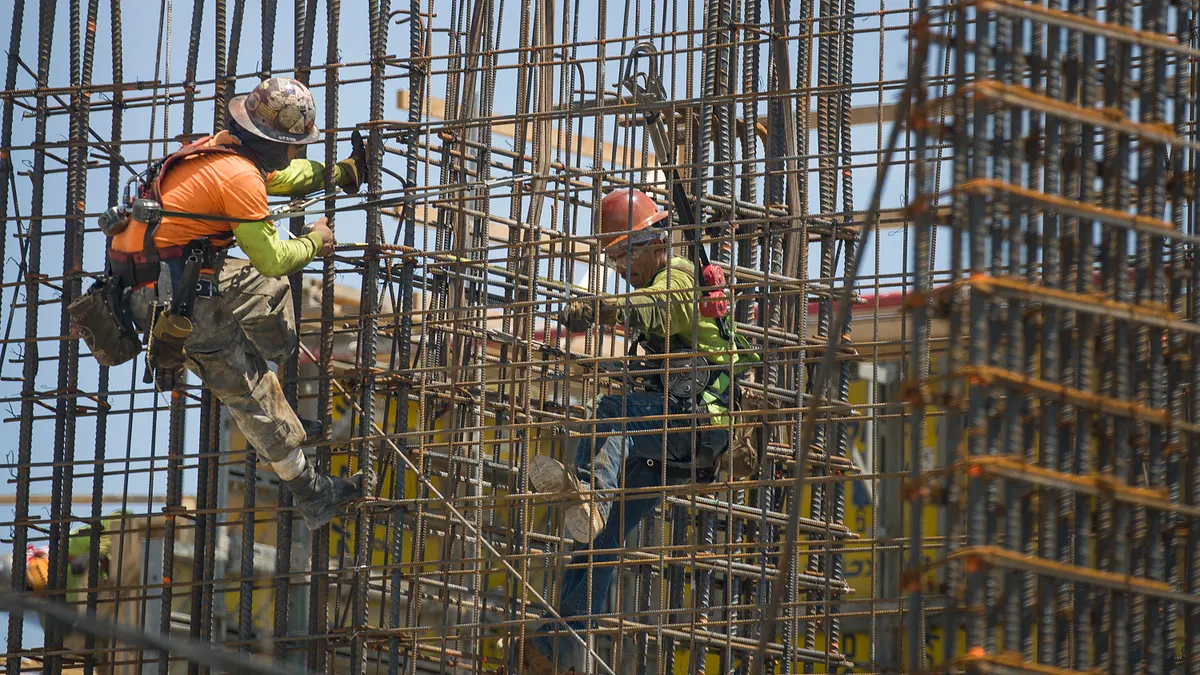Dive Brief:
- Nonresidential construction input prices are up 23.4% since this time last year, according to an Associated Builders and Contractors analysis of U.S. Bureau of Labor Statistics' data released Aug. 12.
- For July, nonresidential construction input prices increased 0.8% since the month before, ABC said.
- While softwood lumber saw a 29% dip in prices since last month, the cost of other types of products used in construction has continued to grow. Energy prices have experienced substantial year-over-year price increases, with the price of natural gas up 146.7%, and crude petroleum and unprocessed energy materials prices up 102.9% and 93.8%, respectively. Prices for steel mill products, which increased 10.8% in July alone, are up 108.6% for the year.
Dive Insight:
ABC Chief Economist Anirban Basu pointed to several reasons for the escalation, including a rebounding economy, ongoing supply chain disruptions and limited productive capacity.
“Many economists insist that the current situation is merely temporary; still, today's input price increases can meaningfully affect contractor fortunes by trimming margins and delaying the onset of projects," he said in a press statement.
Low interest rates mean that more money is being invested in real estate, which often translates into construction projects, he said. However, that liquidity also serves to help push prices higher.
| Material | 12-month change |
|---|---|
| Plumbing fixtures and fittings | 3.5% |
| Concrete products | 4.5% |
| Prepared asphalt, tar roofing and siding products | 10.9% |
| Fabricated structural metal products | 28.8% |
| Nonferrous wire and cable | 31.5% |
| Softwood lumber | 45% |
| Iron and steel | 89.2% |
| Unprocessed energy materials | 93.8% |
| Crude petroleum | 102.9% |
| Steel mill products | 108.6% |
| Natural gas | 146.7% |
SOURCE: ABC analysis of Producer Price Index data
“One can only conclude that the economy will continue to run hot into 2022 despite the malign impacts of the delta variant, producing both hefty advances in gross domestic product and unusually elevated inflation,” said Basu.
The fact that steel prices are rising is not only an indication of the recovery transpiring in goods-producing industries like construction and manufacturing, but also of the difficulty global suppliers are having keeping up with demand, he said.
“That dynamic does not appear poised to change substantially in the very near-term, though there was some evidence of moderating inflation in the most recent Consumer Price Index report,” he said.
He cautioned contractors to build contingencies into their contracts to protect themselves from additional materials price spikes. Given that construction firm services are in high demand, contractors should have enough negotiating leverage to accomplish that under most circumstances, he added.
High prices have vexed contractors since the COVID-19 pandemic began and like Basu, many believe they will continue for the near future. For instance, Gilbane Building Company CEO Mike McKelvy told Construction Dive that he anticipates dealing with high material costs for months, which, as a result, will likely cause clients to pause or cancel jobs.
Nevertheless, McKelvy said, much of the work that companies like Gilbane are doing today involve material prices that were locked in before they skyrocketed to their present state. As a result, high material prices will have a bigger impact on work that's being bid out this year, he said, and will ripple through 2023.
"I think [the construction] industry was expecting a two-year recovery. The supply chain was also looking at a slow recovery," McKelvy said. "What we've had is a much quicker recovery, and it has put a real tight squeeze on the supply chain."














